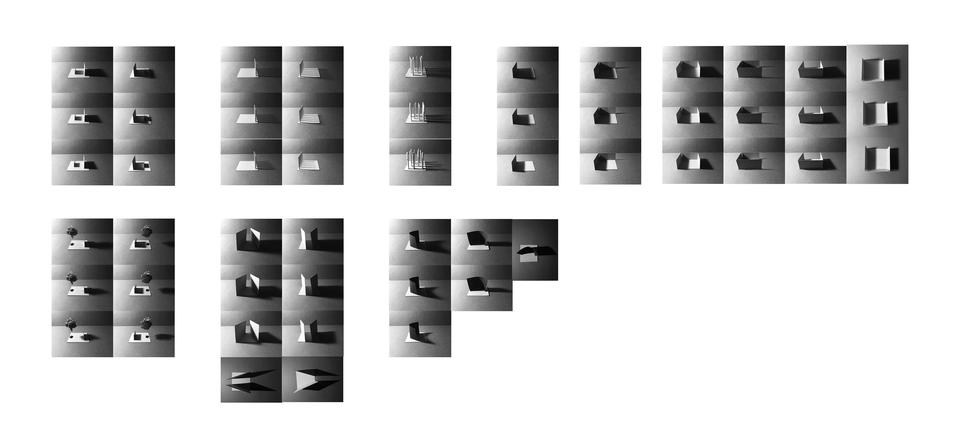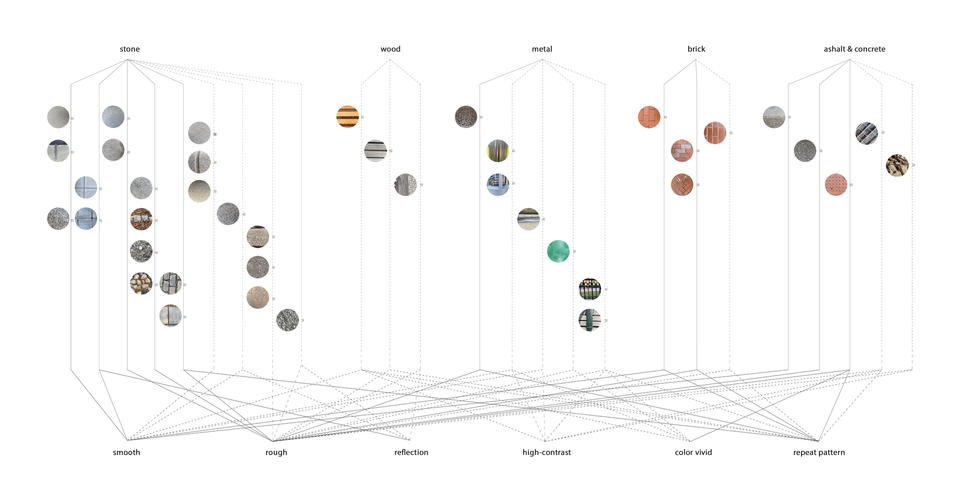ABSTRACT
This thesis explored the use of inclusive landscape design to provide visually impaired people and normal people with enhanced multi-sensory experiences, and for recognizing space, navigating move through spaces. Inclusive design is human design, inviting people in and giving the communicative power to space through stimulating one’s intuition and senses by repetition, sequencing, or patterning in design that signals time, space, and movement through the layouts of walking trajectories between important nodes or places of refuge. Through the visually impaired issue studies, solutions, and methods exploration, I developed principles as a solver, applied them on one site to transform space for testing my theory. This theory aimed to enhance public awareness of visually impaired people, pay attention to their outdoor experiences and provide everyone enhanced space experiences and motivate multisensory to emphasize the critical nodes, connect the fragmented spaces, direct people walking through intersections safely, and indicatively.
WHAT CAN YOU "SEE" WHEN COVERING YOUR EYES?
With our eyes, we often “ignore” some obstacles and block certain signals when we stay or walk through space. The world will be different as we cover our eyes and employ other sensors to perceive the environment. We can feel a different range of environments by using a single sensor to capture information. Touch, acoustic, smell, visual, taste will get different signals and play an important role in ”seeing” and navigating.
Image

Image
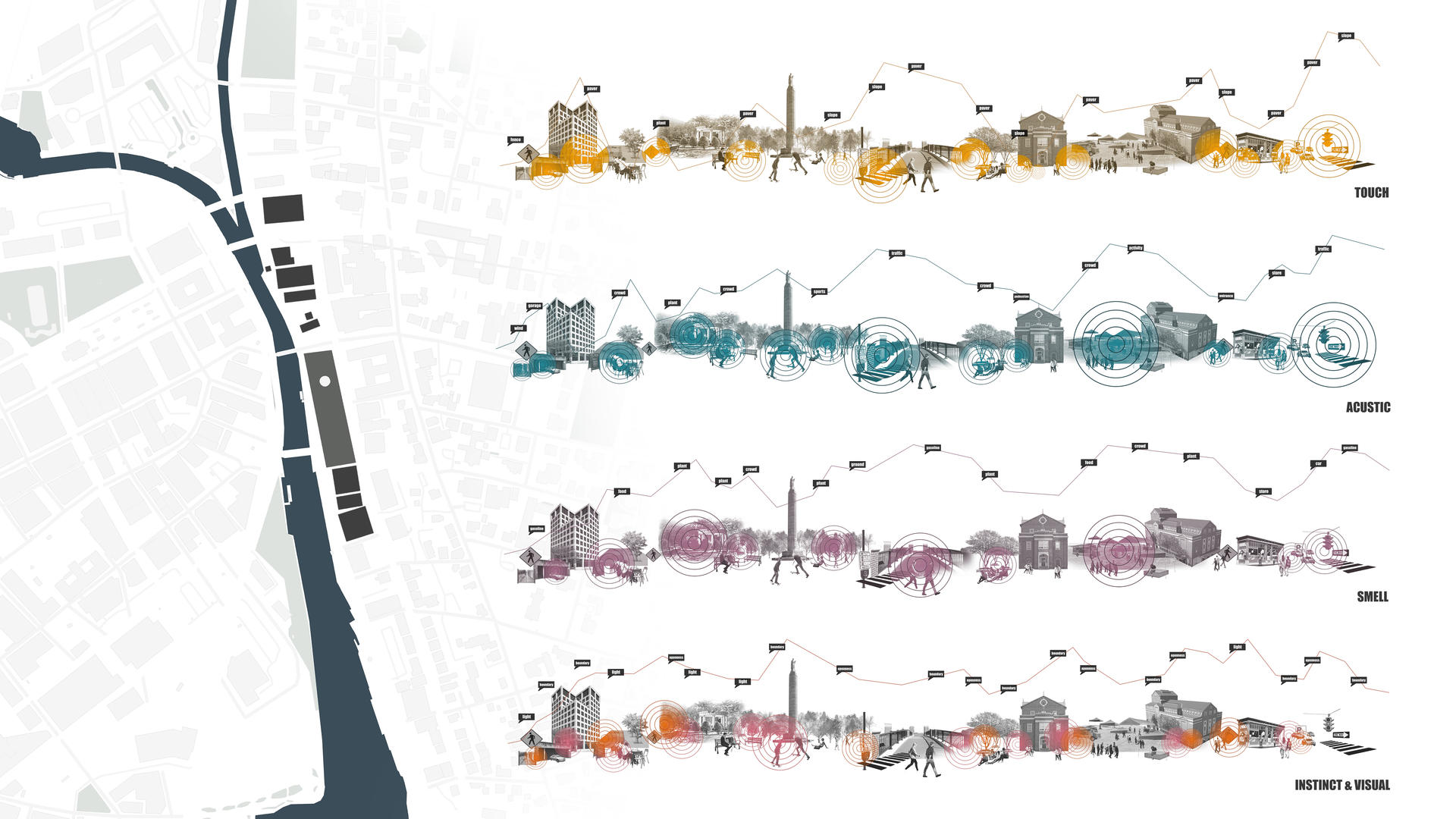
Image
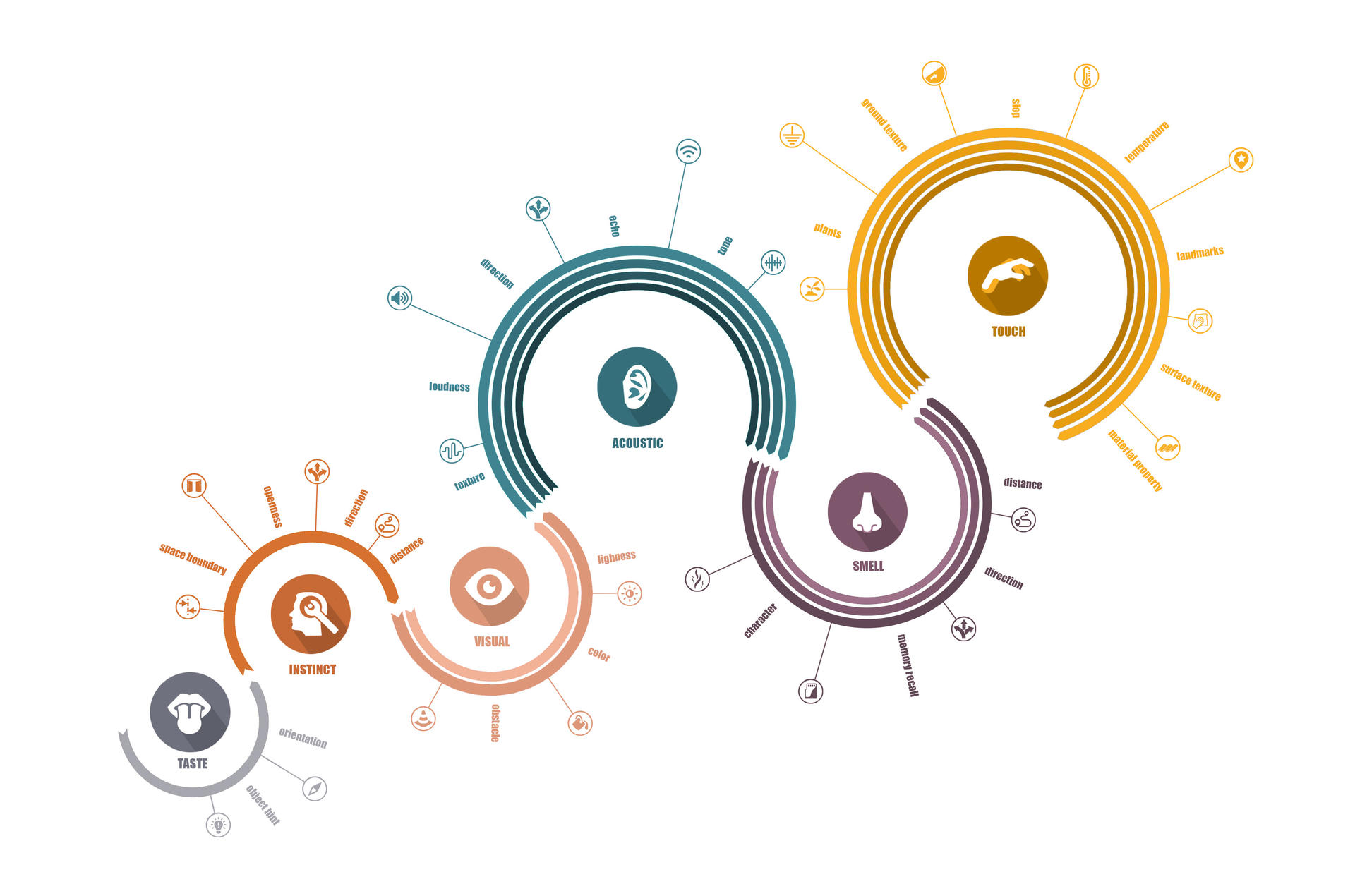
Without the help of sight, blind people would use other compensation sensors to help them recognize environments and navigation.
HOW DO YOU WALK THROUGH SPACE AS A BLIND PERSON?
SPACE AND LIGHT, MATERIAL RESEARCH
STIMULUS EXPLORATION
Through these studies, the visual stimulation is mostly caused by contrast and rhythm. The strong contrast lies in the color and brightness. The rhythm is created by the pattern change. The creation of a system of organization will direct both visually damaged people and normal people moving through space. I classified three systems, pattern system, color system, and light system as the design start point.
A human design is inclusive, inviting people in and giving the communicative power to space through stimulating one's intuition and senses by repetition, sequencing, or patterning in design that signals time, space, and movement through the layouts of walking trajectories between important nodes or places of refuge.
Image
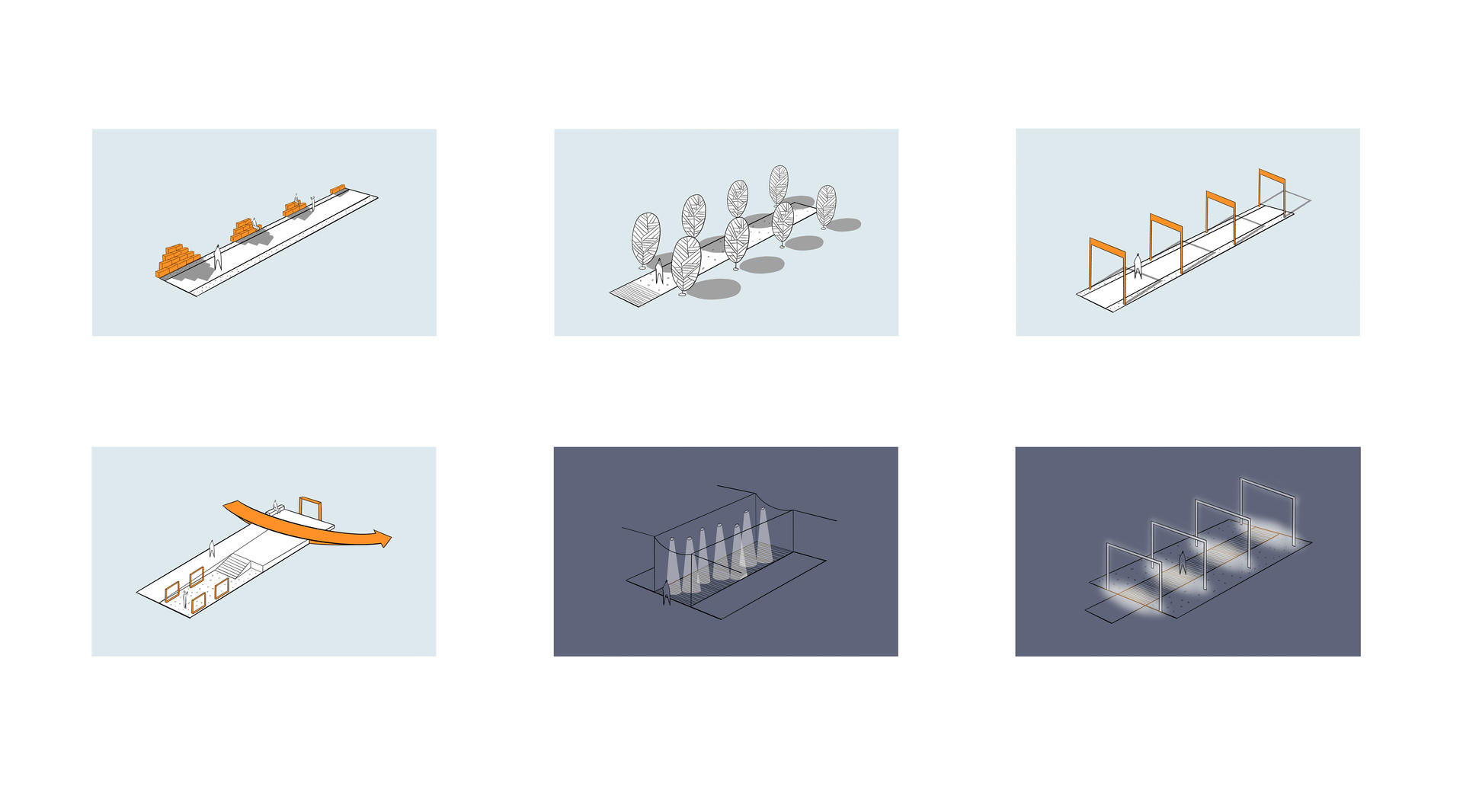
WHAT CAN WE DO TO TRANSFORM THE SPACE FOR EVERYONE?
To apply my findings, the test spot is located in the market square, Providence. The market square is surrounded by several school buildings, facing the two important school buildings which are used often by students. It's become one of the gathering points as well as transportation knots. Students and pedestrians use this place to cross the two sides of the river and hold some events. The current transportation system is complex for pedestrians, facing multiple road crossing points.
Image
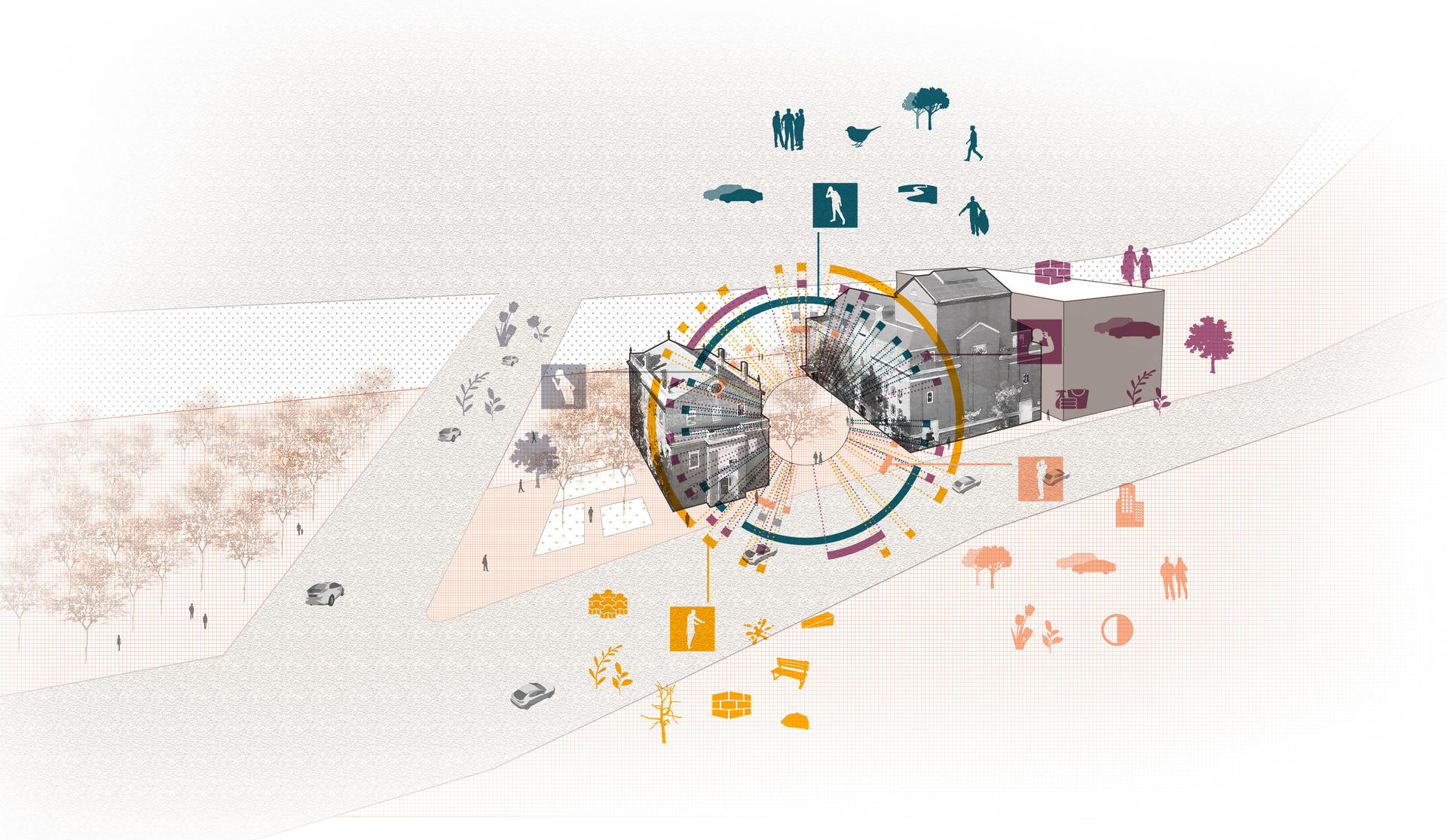
Square is divided into several zones; the entrances, corridors, plaza, and riverside, fulfilling the function as a transition point and gathering space. Zones are connected by a paving system and highlighting the boundaries for people to recognize and navigate. The vision-impaired people can rely on the indication elements to activate other senses for navigation. The normal people also will earn enhanced space experiences.
As an important shared space both for the school and the public to walk through and rest, the square is responsible for connecting surrounding buildings and spaces. The connection across from the roadside to the other riverside, linking the fragmented spaces as a system, serves for people to move through quickly and directionally.
Image
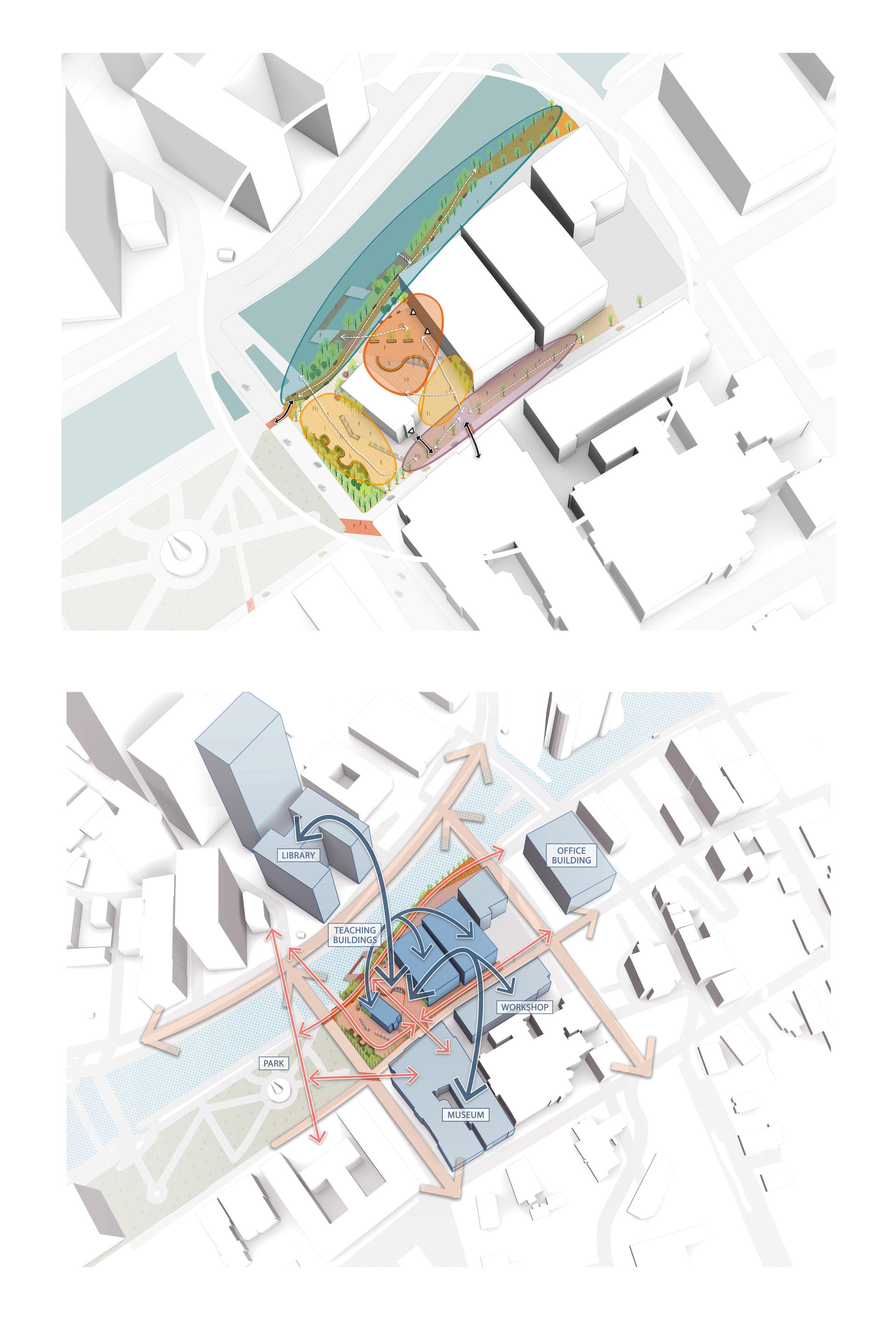
Image
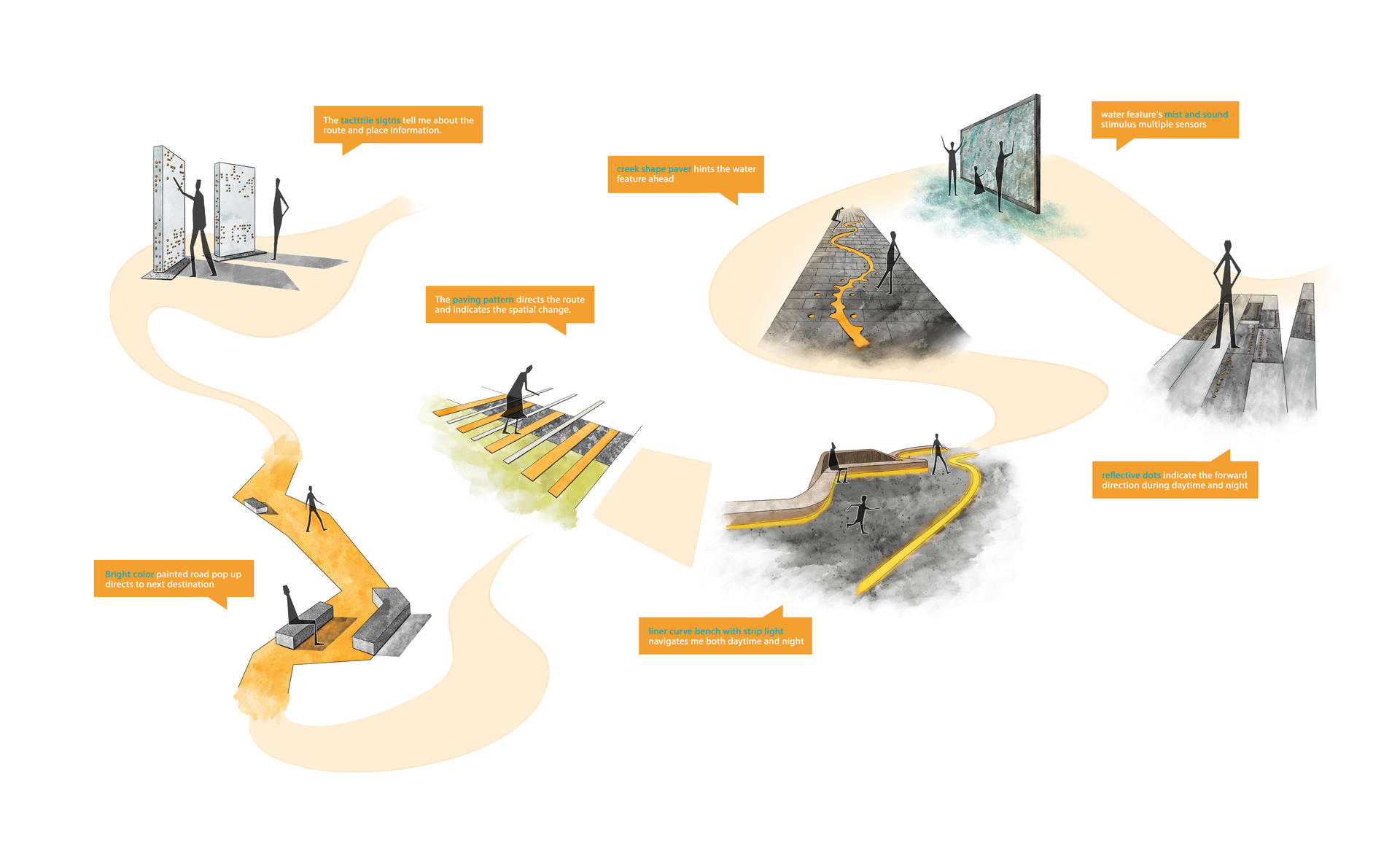
The reformed market square uses various pavements to direct people’s movement and hint at the transition of spaces. By placing landscape elements such as water fountains, curvilinear benches, to stimulate multi-sensory to convey space information for people. The new market square connects two sides of the river and also makes the connection with nearby parks, crossroad buildings.
Image
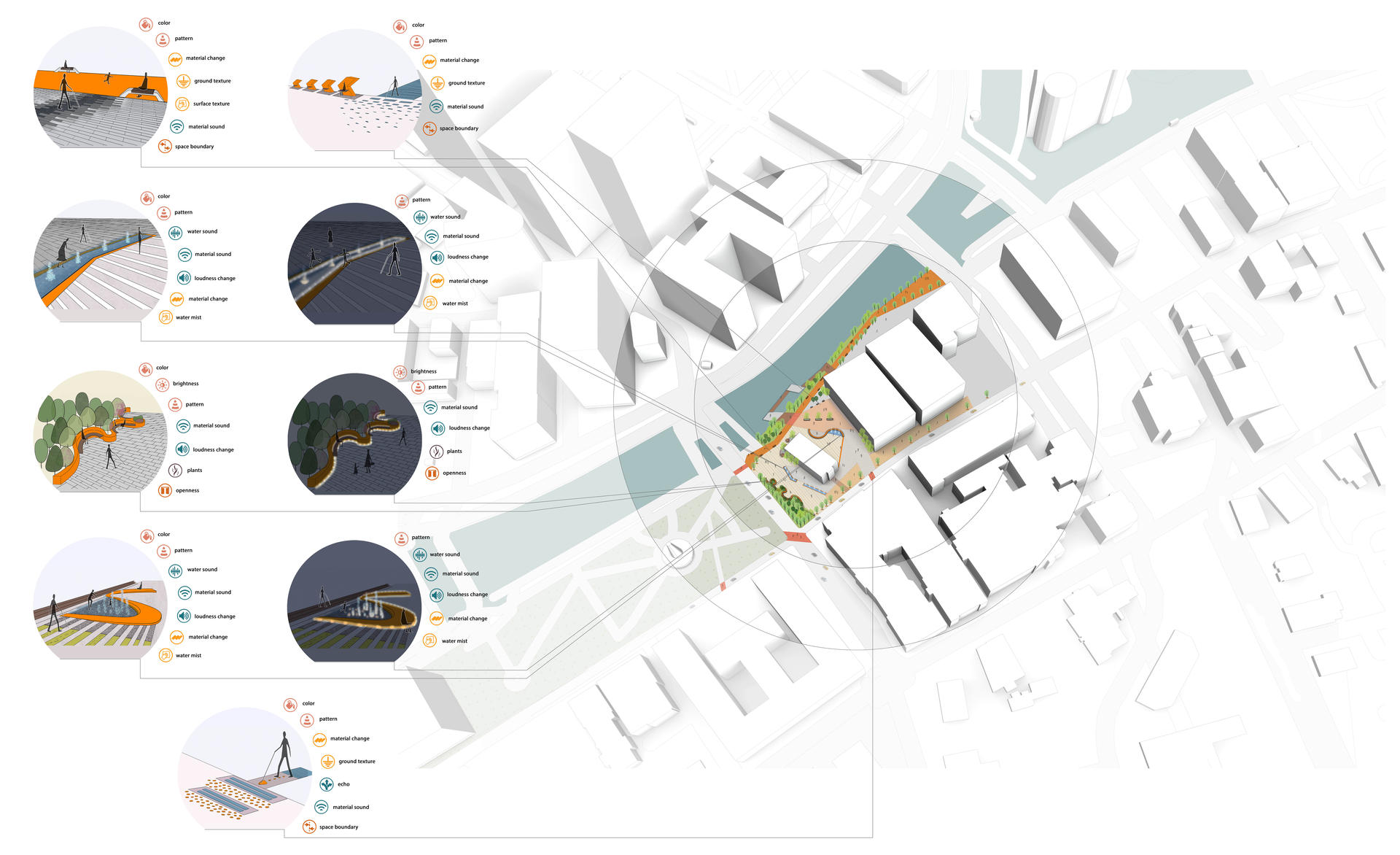
Image
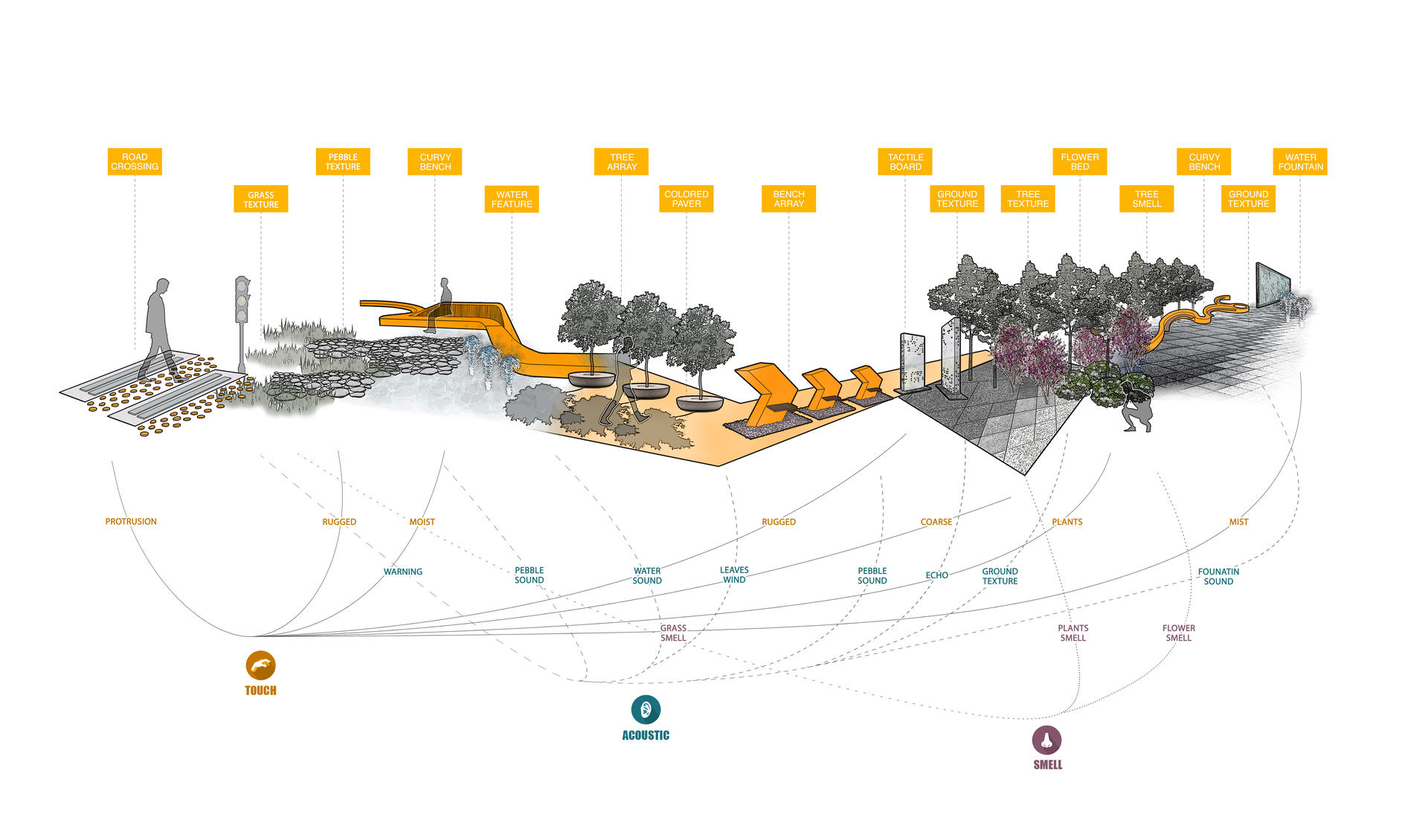
Walking through the city, we always meet the critical points for hints at the boundaries or direction change. The building entrance, road crossing, slope change are three common and important points worth being aware of. A consistent indication paving system will help people recognize the change of transition.
Image
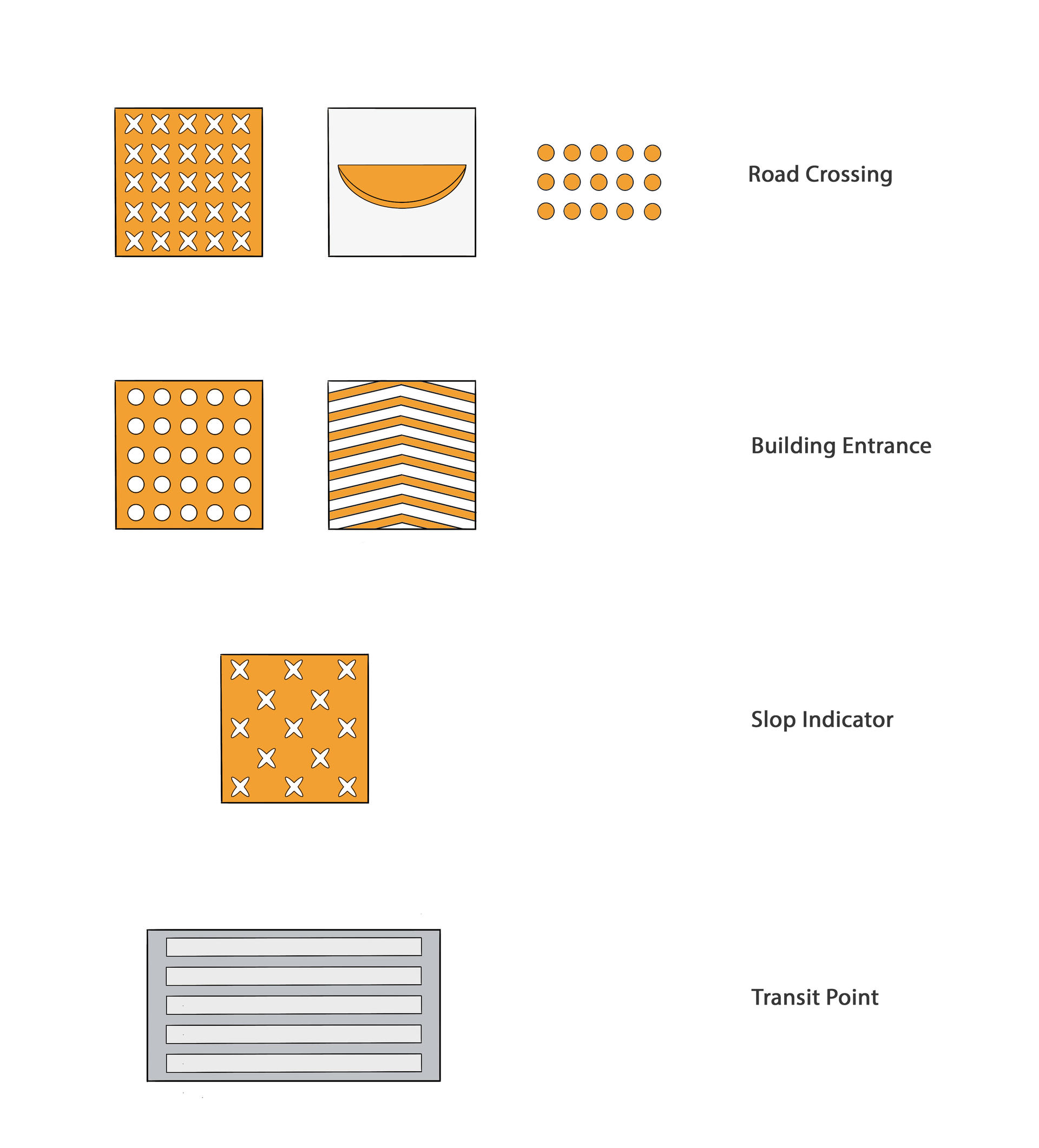
Image

Image

Design is made for humans and serves humans. However, people with disabilities are sometimes excluded from having full experiences in public space design. Public space belongs to everyone and serves equally regardless of individual differences. How to provide enhanced space experiences and motivate multisensory to emphasize the critical nodes, connect the fragmented spaces, direct people walking through intersections safely and indicatively are the main research aspects for making an inclusive public space.
I hope my thesis research could benefit us to rethink the responsibility of design and reposition the relationship between pedestrian and city space. The design has the power to make a difference to our accustomed thinking and cognition and has the potential to bring changes to someone’s life. I always believe the city belongs to people, to pedestrians; the city is served for people and respect to everyone. Landscape design, as a tool for transforming space, should stand on people’s perspective, and make the communication happen mutually.
The world is not perfect but we can break convention and make the changes.
Image
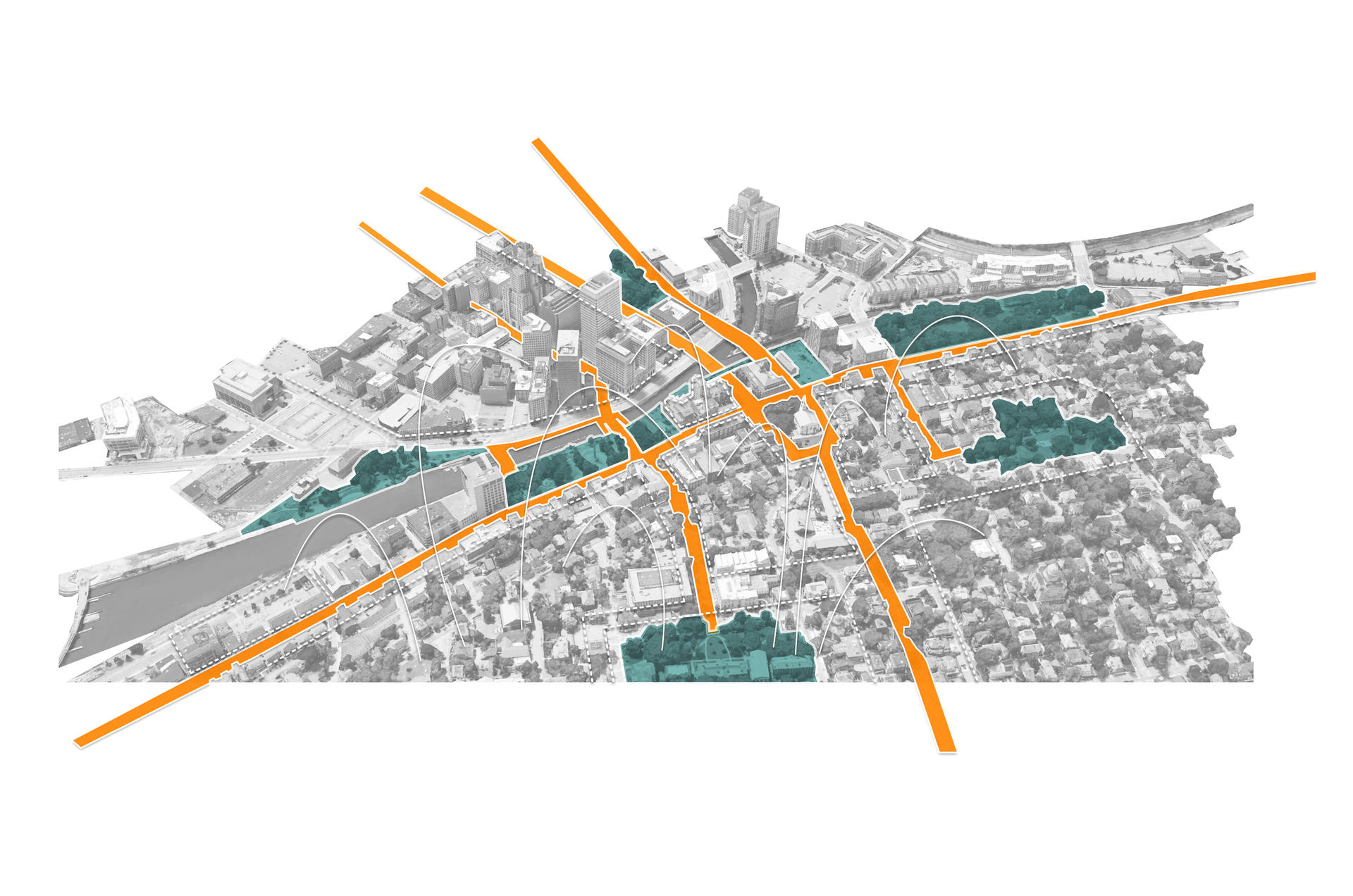
Only limited space transformations won’t help build friendly space experiences for visually impaired and normal people. Reconsidering the relationship between pedestrians and spaces, connecting fragmented city pieces, and building into a navigating system will promote friendly communication between pedestrians and the city.
ANNONTATED BIBILOGRAPHY
- Goldreich D., Kanics I.M., 2006, Performance of blind and sighted humans on a tactile grating detection task, AP&P journal, Duquesne University, Pittsburgh, Pennsylvania.
- Eckerling M., 1996, Guidelines for Designing Healing Gardens. Journal of Therapeutic Horticulture, 8, 21-25.
- Kaplan S., Kaplan F. 1989, The experience of Nature – a psychological perspective, Cambridge University Press, New York.
- Lepore F., 2005, Blind people `see` sound, Current Science, Montreal.
- Lisandru, T. T., Bunea, A., Füstös, A., Dumitraș, A., Bunea, C. I., Dan, V. S., Gal, E., & Mitre, V. (2018). Chromatographic Analysis of Carotenoids and Anthocyanins in Sweet Cherry Autumn Leaves Used in Ornamental Landscapes. Studia Universitatis Babeș-Bolyai Chemia, 63(2), 143–156. https://doi.org/10.24193/subbchem.2018.2.13
- Design is made for humans and serves humans. However, people's Inclusive Design is Human Design. Sasaki. (n.d.). https://www.sasaki.com/voices/inclusive-design-is-human-design/.
- Network, L. L. A. (2017, July 20). What Roles Can Landscape Architecture Play for Physically Challenged People? Land8. https://land8.com/what-roles-can-landscape-architecture-play-for-physically-challenged-people/.
- GardenExpert999. (2012, March 25). How to Design a Sensory Garden for the Blind or Visually Impaired. Dengarden. https://dengarden.com/gardening/How-to-Design-a-Sensory-Garden-for-the-Blind-or-Visually-Impaired.
- BigRentz, I. (2021, April 6). HOME. BigRentz. https://www.bigrentz.com/blog/ultimate-guide-designing-navigating-spaces-people-vision-impairment.
- Sensory gardens, 2012, Ed. Thrive, United Kingdom.http://www.mdlpl.ro/_documente/constructii/reglementari_ tehnice/contract_nr_428.pdf.

